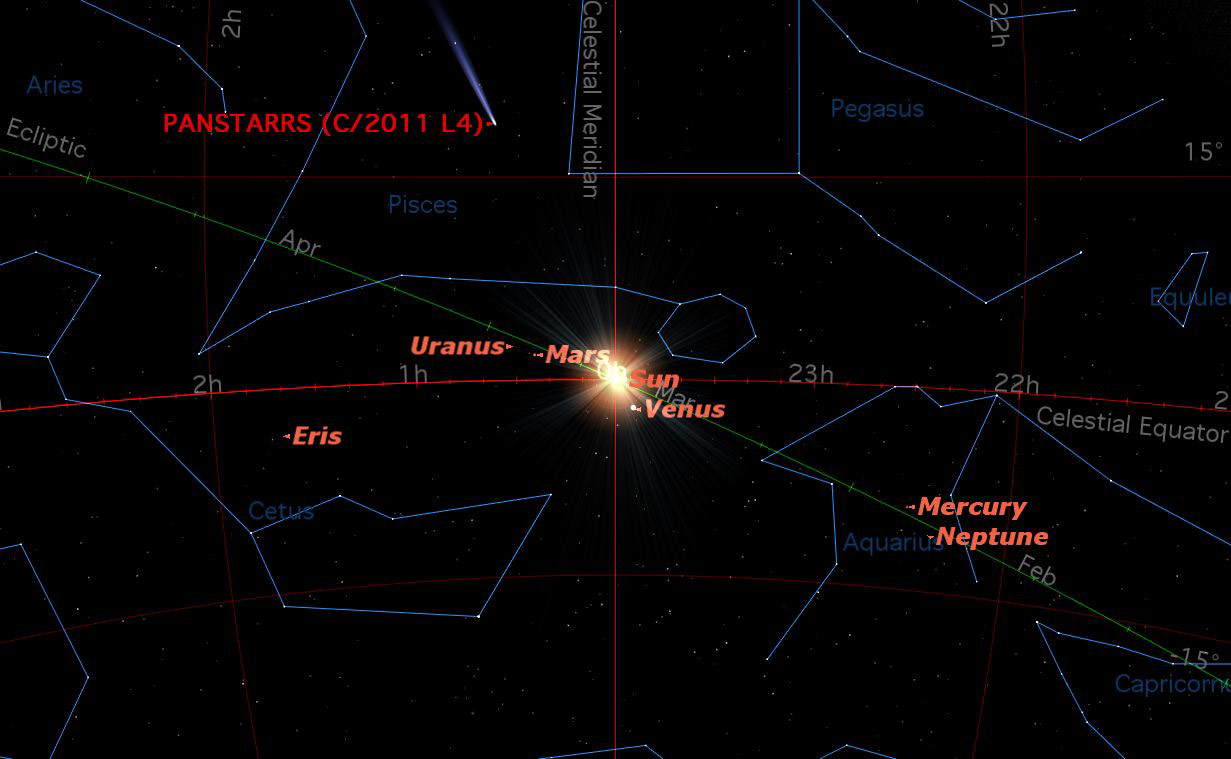
Lately, around this time of year, I often get letters from people wondering why spring begins early this year. Many folks assume the first day of spring in the Northern Hemisphere — also known as the vernal equinox — has always come on March 21. But this year seems to be an exception, for in 2013 the first day of spring comes on Wednesday, March 20 at 11:02 UT, or 7:02 a.m. EDT/4:02 a.m. PDT.
Now this doesn't seem right. When many of us were growing up, the first day of spring was always on March 21, not March 20, right? Now, all of a sudden, spring comes on March 20. How did that happen?
While it's true that we've tended to celebrate the beginning of spring on March 21 in recent years, astronomers and calendar manufacturers alike say that this year, the spring season starts one day earlier, March 20, in all time zones in North America.
Unheard of, you might think. But not if you look at the statistics.
In fact, did you know that during the 20th century, March 21 was actually the exceptionrather than the rule for the first day of spring? The vernal equinox landed on March 21 only 36 out of 100 years. And from 1981 to 2102, Americans have (and will) celebrate the first day of spring no later than March 20. [Earth's Equinoxes & Solstices (Infographic)]
In 2016, those living in Alaska, Hawaii and the Pacific, Mountain and Central time zones will see spring begin even earlier: on March 19. And in 2020, it will start on March 19 for the entire United States.
There are a few reasons why seasonal dates can vary from year to year.
Get the Space.com Newsletter
Breaking space news, the latest updates on rocket launches, skywatching events and more!
1) A year is not an even number of days and neither are the seasons. Earth's year — the length of time it takes to circle the sun once — lasts about 365.25 days. To try to achieve a value as close as possible to the exact length of the year, our Gregorian Calendar was constructed to give a close approximation to the tropical year, which is the actual length of time it takes for the Earth to complete one orbit around the sun. It eliminates leap days in century years not evenly divisible by 400, such as 1700, 1800, and 2100, and millennium years that are divisible by 4000, such as 8000 and 12000.
2) Another reason is that the Earth's elliptical orbit is changing its orientation relative to the sun (it skews), which causes the Earth's axis to constantly point in a different direction — a process called precession. Since the seasons are defined as beginning at strict 90-degree intervals, these positional changes affect the time Earth reaches each 90-degree location in its orbit around the sun.
3) The pull of gravity from the other planets also affects the location of the Earth in its orbit.
The current seasonal lengths for the Northern Hemisphere are:
- Winter:88.99 days
- Spring: 92.76 days
- Summer: 93.65 days
- Autumn: 89.84 days
As you can see, the warm seasons, spring and summer, combined are 7.573 days longer than the colder seasons, fall and winter (good news for warm weather admirers).
However, spring is currently being reduced by approximately one minute per year, and winter by about one-half minute per year. Summer is gaining the minute lost from spring, and autumn is gaining the half-minute lost from winter.
Winter is the shortest astronomical season, and with its seasonal duration continuing to decrease, it is expected to attain its minimum value — 88.71 days — by about the year 3500.
The situation for different parts of the world, being in different time zones and hemispheres, varies. For Europe, the last time spring began on March 21 was in 2007, and it won't happen again until 2102.
For places much farther to the east, such as Tokyo, Japan (nine hours ahead of Greenwich Mean Time), spring will fall on March 21 in two out of every four years from 2014 through 2023 (2014, 2015, 2018, 2019, etc.), then once every four years from 2027 through 2055. But then that's it until 2101.
Joe Rao serves as an instructor and guest lecturer at New York's Hayden Planetarium. He writes about astronomy for The New York Times and other publications, and he is also an on-camera meteorologist for News 12 Westchester, New York. Follow us @Spacedotcom, Facebook or Google+. Originally published on SPACE.com.
Join our Space Forums to keep talking space on the latest missions, night sky and more! And if you have a news tip, correction or comment, let us know at: community@space.com.

Joe Rao is Space.com's skywatching columnist, as well as a veteran meteorologist and eclipse chaser who also serves as an instructor and guest lecturer at New York's Hayden Planetarium. He writes about astronomy for Natural History magazine, Sky & Telescope and other publications. Joe is an 8-time Emmy-nominated meteorologist who served the Putnam Valley region of New York for over 21 years. You can find him on Twitter and YouTube tracking lunar and solar eclipses, meteor showers and more. To find out Joe's latest project, visit him on Twitter.
